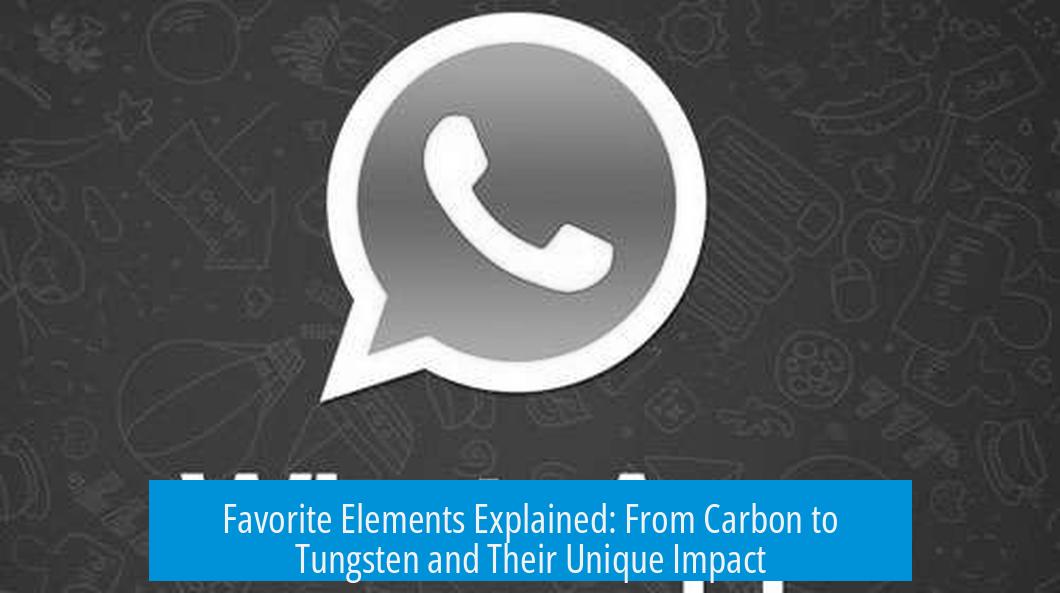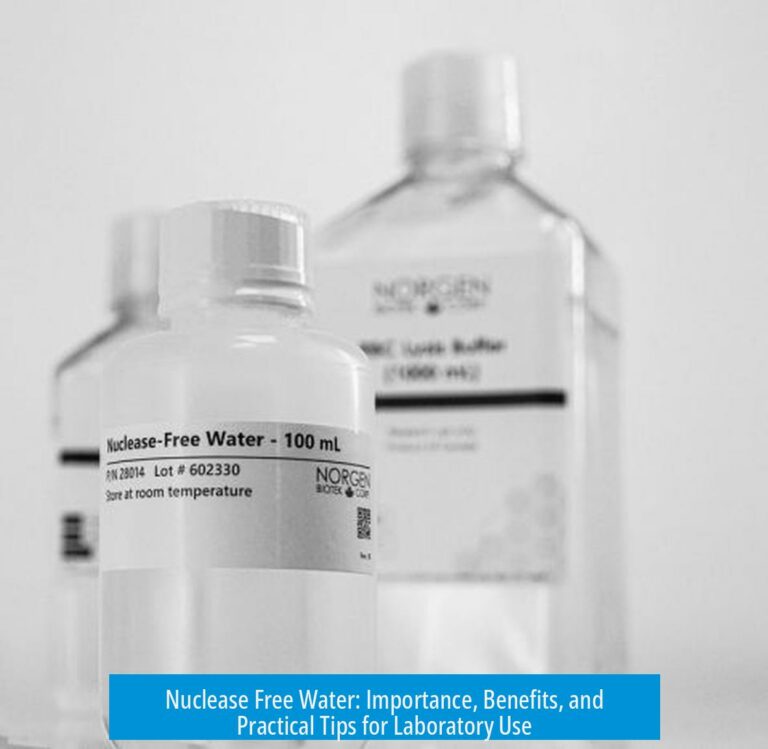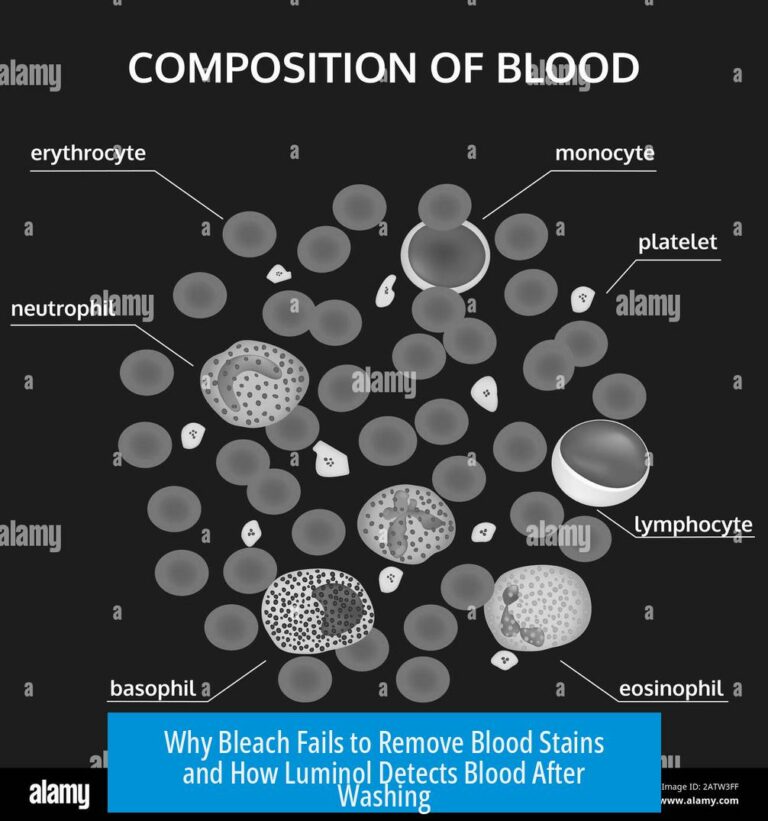What’s Your Favorite Element and Why?

Choosing a favorite chemical element depends on interest, utility, and unique properties. Many experts and enthusiasts favor elements like tungsten, carbon, lithium, iridium, and copper for various reasons ranging from physical characteristics to biological importance.
Tungsten: The Hard and Heavy Contender

Tungsten stands out because of its extraordinary hardness and density. It is used widely in industrial applications, especially for shaping steel and as filaments in incandescent light bulbs.
- Its chemical symbol, W, does not correspond to its English name, making it interesting from a nomenclature perspective.
- Tungsten oxide can be employed as a blue pigment in dyeing.
- In welding, tungsten electrodes are preferred due to their durability and high melting point.
- Its resistance to heat makes it ideal for creating stable and long-lasting tools.
Some enthusiasts even choose tungsten for its symbolic value, occasionally tattooing its chemical symbol as a mark of respect for its features.

Carbon: The Foundation of Life and Chemistry
Carbon frequently emerges as a favorite due to its fundamental role in organic chemistry and life itself. It has six protons, making 6 a lucky number for many who admire this element.

- Carbon atoms form strong covalent bonds with themselves and other elements, enabling vast molecular diversity.
- Its allotropes include diamond and graphite, showcasing diverse physical properties.
- Without carbon, life’s complex molecules such as DNA and proteins would not exist.
- Many chemical careers, especially in organic chemistry, hinge on carbon’s vast reactivity and bonding versatility.
Lithium: The Healing Metal
Lithium’s popularity is partly due to its therapeutic uses. It is a rare element used in medicine, particularly for psychiatric treatments.

- Unlike toxic elements, lithium’s medical utility includes treating bipolar disorder and other mental health conditions.
- Its simple, light nature contrasts with its profound physiological effect.
- Lithium ions are crucial in battery technology as well, powering portable electronics globally.
Transition Metals: Iridium, Palladium, Ruthenium, and Copper
Transition metals captivate chemists due to their catalytic properties and varied oxidation states. Iridium, palladium, and ruthenium are catalysts in numerous industrial reactions.
- Iridium is used extensively for photocatalytic reactions in laboratory settings.
- Palladium facilitates elegant catalytic cycles in organic synthesis.
- Ruthenium supports the manufacture of advanced plastics through catalytic methods.
- Copper appeals for its natural biological roles and physical properties:
| Property | Copper |
|---|---|
| Biological Importance | Essential trace metal in enzymes |
| Color | The only common metal with a true reddish color |
| Electronics | Excellent electrical conductor |
| Chemical Behavior | Forms colorful compounds, especially blue-green ones |
| Practicality | Affordable, antimicrobial, readily oxidized and reused |
Other Elements of Interest
Helium and Noble Gases
Helium is admired as the simplest multi-electron atom and for its distinct physical properties. It resists chemical reaction and is lightweight. Noble gases intrigue because of their inertness and unique atomic structures.
Fluorine: The Reactive Nonmetal
The element fluorine amazes chemists due to its electronegativity and reactivity. It plays a key role in pharmaceuticals and materials science.
- Fluorine’s electronegativity creates strong C-F bonds used in drug design.
- Difluoromethyl groups add lipophilicity and hydrogen bond donating properties.
- It is used industrially for cleaning, etching, and manufacturing refrigerants.
Silicon and Aluminum: Practical Semimetals
Silicon deserves appreciation for its fundamental role in technology and memes alike. Aluminum is cherished for its abundance, recyclability, and light, durable nature.
- Silicon is the backbone of modern electronics and computer chips.
- Aluminum’s oxide layer protects it and makes it ideal for lightweight appliances and military applications.
- Both elements challenge the boundaries of inorganic and organic chemistry.
Other Notables
- Iron: Core of life’s oxygen transport system and transition metal chemistry.
- Bismuth: Known for beautiful crystallization and low toxicity.
- Uranium: Vital for nuclear energy and radiochemistry.
- Cesium: Basis of atomic clocks through precisely measured vibrations.
- Tennessine and Astatine: Rare and fascinating radioactive elements.
Why People Choose Different Elements
Preferences often stem from personal experiences, scientific utility, or aesthetic appeal. For example:
- Some favor elements with unique names or symbols, like tungsten (W).
- Others select elements essential to life, such as carbon and nitrogen.
- Elements with special applications, like lithium in medicine or cesium in timekeeping, attract specialists.
- Transition metals receive praise for catalytic ability and complex chemistry.
Even seemingly mundane or hazardous elements hold appeal for various reasons, such as arsenic’s historical use or mercury’s distinctive appearance.
Summary: Key Takeaways
- Favorite elements reflect personal or professional interests, from physical properties to biological roles.
- Tungsten is prized for hardness, durability, and unique symbol.
- Carbon underpins life and organic chemistry, making it indispensable.
- Lithium stands out for medicinal and energy storage uses.
- Transition metals like iridium, palladium, and ruthenium offer catalytic versatility.
- Copper combines biological importance with practical utility.
- Noble gases and halogens like helium and fluorine fascinate for their unusual chemistry.
- Abundant elements like aluminum and silicon shape modern technology and industry.
- Individual preferences often blend scientific fascination and experiential connections.
What’s Your Favorite Element and Why? The Chemistry of Passion
Choosing a favorite element is like picking a favorite star in the sky — each one shines uniquely and holds a story worth telling. But among the 118 known elements, which one captures the heart and mind the most? Let’s explore this intriguing question, tapping into some fascinating reasons behind people’s elemental favorites. Whether it’s for the element’s properties, personal symbolism, or pure curiosity, there’s a rich tale behind every choice.
So, what’s your favorite element and why? Let’s dive into some standout picks and discover what makes each element truly special.
Tungsten: The Heavyweight Champion You Never Knew You Loved
Take tungsten, for instance. It’s the tough guy in the periodic ring. People love tungsten because it’s incredibly hard and heavy. It’s the element that shapes steel and lights up our lives—literally. The tungsten filament in old-school lightbulbs mesmerizes with its glow and resilience. Some folks even boast tattoos of the tungsten symbol (W), engraved like a badge of honor on their forearm. How cool is that?
But tungsten’s charm doesn’t stop there. Have you heard it can oxidize into a blue pigment used for dyeing? Perfect for adding that subtle pop of color! Tungsten is not just brute strength; it’s a blend of beauty and utility.
Carbon: The Backbone of Life and Luck
If life had a hero element, carbon would be it. “I’d be nothing without carbon,” says many enthusiasts, and they’re right. Carbon forms the skeleton of living molecules and bonds smarter than you’d expect. Plus, it has a lucky number – 6 – which some find as charming as its chemistry.
Every breath, every cell, and every career in biology, chemistry, and medicine owes its existence to carbon. No carbon, no life; no life, no blog post.
Lithium: The Element That Heals
Lithium stands out because it’s not just a chemical—it’s a medicine. An element that treats complex diseases? That’s like finding a magic wand in the periodic table. Unlike many poisonous or inert elements, lithium plays an active role in mental health therapy. How often do you find an element with a bedside manner?
Iridium and Palladium: The Catalytic Stars
For chemists who love reactions and speed, iridium and palladium steal the spotlight. Iridium shines in photocatalysis, revolutionizing reactions with its catalytic prowess. When reaction efficiency matters, these transition metals are the go-to.
Palladium, too, wins hearts with its elegance in catalyzing some of the most beautiful and complex chemical transformations known. Plus, it’s a feast for the eyes when formed into shiny ingots. Practicality wrapped in style!
Helium: The Lighthearted Noble
Who said elements can’t have humor? Helium is often described as the only element with a sense of humor. It’s simple yet intriguing, known for making your voice sound like a cartoon chipmunk. Well, if that isn’t entertaining chemistry, nothing is.
Copper: The Colorful Conductor
Copper is like the artist of the metals. Its vibrant reddish hue breaks the monotony of grey metals. It’s essential for life, a great conductor of electricity and heat, and even dances well with other metals to form useful alloys. Copper crystals come in a rainbow of compounds, especially in soothing blue-greens. Plus, it’s antimicrobial, meaning it fights germs without a cape.
What more could you want in a metal?
Silicon: The Digital Pioneer
Without silicon, memes wouldn’t exist. The chip inside your phone, computer, and every smart device? Silicon’s the star. Chemists debate its nature—organic vs. inorganic—but one thing’s clear: silicon is the backbone of modern digital life.
Nitrogen: The Life-Enabler and Rebel
Nitrogen is both essential and a bit of a loner. It loves bonding with itself rather than mingling widely with others. Fun fact: all the best drugs have nitrogen. It’s part of the air we breathe and the molecules that keep life ticking.
Rare and Remarkable: Tennessine, Astatine, and Cesium
Some elements charm us not for everyday utility but for rarity and story. Tennessine, one of the rarest elements, connects to personal adventures such as visits to Oak Ridge National Lab — a hotspot of scientific discovery.
Astatine, radioactive and almost mythical due to its rarity, intrigues those who love the underdog element. Cesium’s vibrant role in the atomic clock highlights how some elements govern time itself—and it’s reactive enough to be stored in oil. Just imagine that!
Vanadium and Osmium: The Hefty and the Beautiful
Vanadium captivates with its stunning blue compounds and a pop culture nod (Vsauce fans, anyone?). Osmium impresses with its dense heft and status as one of the costliest naturally occurring elements. Plus, it’s got a name that rings like a mysterious charm—osmium.
Uranium and Francium: The Radioactive Romance
From school reports to fascination with radiation, uranium and francium capture imaginations. Uranium’s role in radioisotopes is essential for energy and medical diagnostics, while francium’s fleeting presence is a reminder of nature’s elusive wonders.
Fluorine: The Little Element with a Big Punch
Fluorine is like that intense friend who can mess things up royally but also bring incredible benefits. Its electronegativity is legendary, changing chemical properties and playing a vital role in drug discovery. Fluorine compounds offer lipophilicity and hydrogen bonding, crucial for designing new medicines.
Plus, its color and reactivity make it stand out at any chemistry party.
The Glamorous Metals: Bismuth, Mercury, and Gallium
- Bismuth dazzles with its multicolored crystals and low melting point. Friends bonding over homemade bismuth crystals is a classic chemistry joy—a rainbow in metal form that even soothes upset stomachs.
- Mercury is the “pretty girl” of elements—shiny, liquid at room temperature, and a little dangerous. It’s captivating, but handle with care!
- Gallium, the party trick element, melts in your hand and reacts surprisingly with aluminum. Carrying a vial of it is a great icebreaker at any geek gathering.
Iron: The Element in Your Veins
Iron isn’t just another metal; it’s a life enabler, found in blood and earth. Organometallic chemists admire it, and its chemistry is fascinating and diverse. It comes with a loyal fanbase that can wax poetic on cobalt and thorium as well.
More Elements, More Anecdotes
Other elements have their niche admirers too:
- Sulfur for its visually compelling sulfates and ease of detection.
- Titanium gets a shoutout, partly due to its catchy song.
- Potassium is considered essential but recognizes the fine line between dose and toxicity—a metaphor that resonates beyond chemistry.
- Argon rebels against noble gas norms, embodying an outsider spirit.
The Element of Surprise
Sometimes, the answer to “What’s your favorite element?” is a playful nod to the “element of surprise.” Chemistry humor, anyone? This unexpected choice reminds us that joy in science doesn’t always come from formulas and facts, but from the stories we create around them.
Why Does It Matter Which Element You Favor?
Choosing a favorite element often reflects passions, career paths, or quirky personal stories. For a chemist, metals like palladium or iridium mean catalysts and reactions. For an artist, copper’s hues might inspire. For a medic, lithium’s healing power strikes a chord.
More than that, it’s a window into how we connect with the universe on a molecular level. It’s asking: “What qualities resonate with me? Toughness? Utility? Beauty? Rarity?” These stories enrich our understanding and appreciation of the building blocks of matter.
Finding Your Favorite Element: A Quick Guide
Not sure where to start? Here’s a fun way to uncover your elemental soulmate:
- Think about your interests. Are you drawn to health, technology, art, or energy?
- Consider properties you admire. Do you like strength, rarity, color, or reactivity?
- Recall any personal chemical experiences. Have you ever made crystals? Admired metals? Used gadgets dependent on specific elements?
- Google your soul element’s symbol and trivia. It’s a fun rabbit hole with surprising finds.
Final Thought
Elements aren’t just symbols on a chart; they’re stories, tools, wonders, and sometimes even friends. They shape life, technology, culture, and personal journeys. Whether you pick tungsten for its tough nature, carbon for being the heart of life, or helium for a light-hearted laugh, your favorite element says something about you.
So, what’s your favorite element and why? Remember, in this vast universe of atoms, there’s an element waiting to steal your heart.
What makes tungsten a favorite element for some people?
Tungsten is very hard and heavy. It is key in shaping steel and in lightbulb filaments. Tungsten also oxidizes to a blue pigment. Some enjoy its use in welding and its unique symbol.
Why do many choose carbon as their favorite element?
Carbon is essential for life and bonds easily. It is crucial in biology and many careers depend on it. Its atomic number 6 is even considered lucky by some.
What special property makes lithium stand out?
Lithium is one of the few elements used as medicine. It can treat diseases unlike most elements which can be toxic or just supplements.
Why is copper liked beyond its metal properties?
Copper has real color, often blue-green compounds, and forms stable complexes. It is safe at low amounts and useful in electronics and alloys. Its antimicrobial trait is a plus.
What attracts chemists to transition metals like iridium and palladium?
Iridium is used widely in catalysis, especially photocatalytic reactions. Palladium catalyzes elegant chemical reactions and forms attractive ingots. Both are valued in advanced chemistry.





Leave a Comment